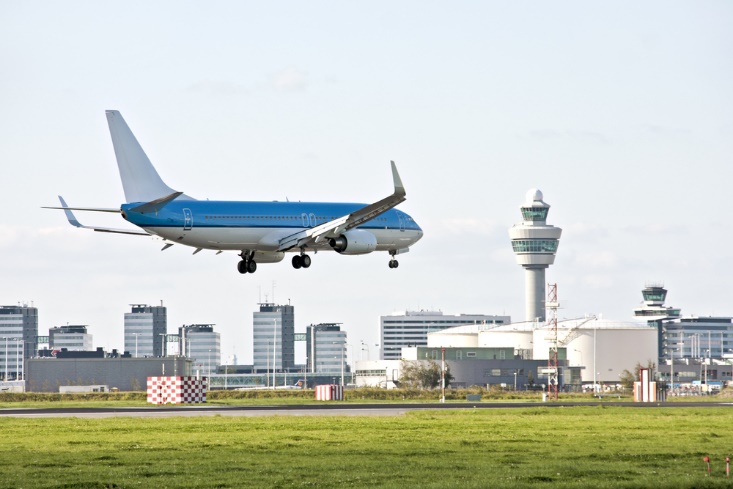In June, the Netherland’s air navigation service provider (LVNL) successfully implemented Intelligent Approach, an arrivals spacing tool at Schiphol Airport that optimises runway capacity, while delivering better on-time performance and reducing CO2 emissions. Developed by NATS and Leidos, the solution builds on research and development on reducing separations on arrivals within the framework of SESAR 2020.
Since its implementation, SESAR 3 Founding Members, LVNL andSchiphol Airport, have reported an improved capacity for aircraft landing during high wind conditions, with 3-6 additional aircraft per hour landing per runway. This will benefit on-time performance and the noise impact for local residents, and it has been achieved without the need for any new equipment or infrastructure at the airport itself.
Intelligent Approach works by dynamically calculating the optimum time between arrivals based on both the live wind conditions (downlinked direct from each aircraft) and the aircraft size and type. This time-based interval is then translated into a marker on a controller’s radar screen, with their role to then line up each arrival as close to that line as possible.
By dynamically calculating the spacing between aircraft based on the conditions rather than relying on set distances, Intelligent Approach helps airports to grow the tactical capacity of their runways and thereby improve on-time performance.
LVNL deployed Intelligent Approach at the end of January as part of their project to adopt the new European guidelines for aircraft separation (known as RECAT) and time-based separation. As a proven tool already in use at Heathrow and Toronto, Intelligent Approach allowed them to do both simultaneously and the results have been almost immediate.
The tool builds on the research and innovation work that was carried out within the framework of the SESAR 2020 project, Airside, Airport and Runway Throughput (AART – PJ.02), and specifically optimised runway delivery and final approach (# PJ.02-01-01).
"Our collaboration with SESAR has been important in the development of Intelligent Approach, enabling us to enhance air traffic control operations at major airports like Heathrow, Toronto, and Schiphol. The implementation of ORD technology at Heathrow, alongside successful deployments at other airports, demonstrates the invaluable contributions of the SESAR project in maximising runway efficiency and improving overall operational resilience. We are proud of the positive outcomes realised through SESAR research efforts, ensuring safer and more efficient air travel for all,” Brendan Kelly, Head of Queue & Capacity Management Solutions at NATS.
‘LVNL recently implemented the RECAT EU Wake Turbulence Categorisation and Separation Minima for Approach and Departure in combination with Time Based Separation (TBS) at Schiphol Airport. This RECAT-TBS is supported by the Intelligent Approach tool, that was based on previous successful SESAR research, by NATS and Leidos,’ explained Marcel Bakker, General Manager Systems & Infrastructure at LVNL.
‘By leveraging the previous work accomplished, LVNL has efficiently used the groundwork laid by SESAR. The implementation was exceptionally smooth because of the maturity of the technology,’ he added.
Read about the implementation
More about the SESAR Solution
More about AART

